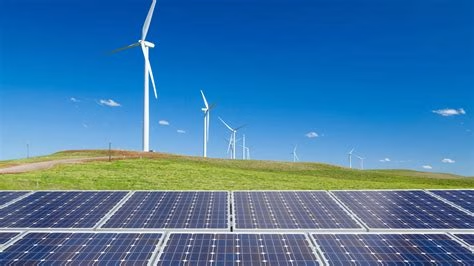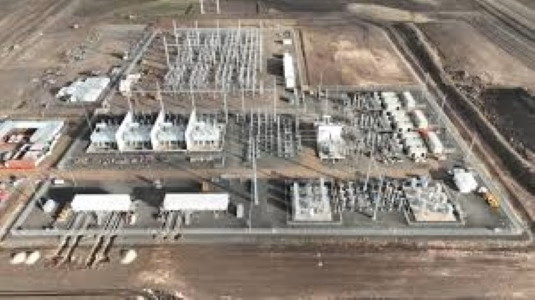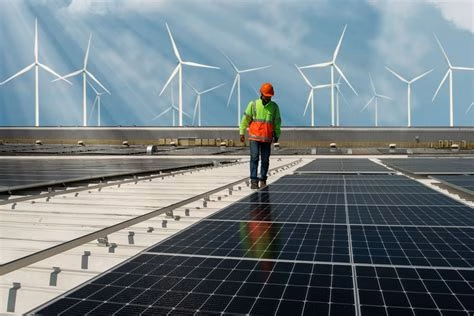Australia’s Capacity Investment Scheme (CIS) Tender 4 approved 20 projects totalling 6.6 gigawatts (GW) of new renewable generation capacity. This exceeded the tender’s original 6 GW target. Among the winners, more than half are hybrid installations with battery developments. The hybrids contribute about 3.5 GW of generation and 11.4 GWh of storage capacity. The awarded portfolio also spans multiple states and is expected to deliver reliable, dispatchable renewable energy by 2030. This will help power millions of households while also supporting job creation, local supply chains, and First Nations benefit sharing schemes.
Australia Approves 6.6 GW of New Renewable Projects Under CIS Tender 4
Reported October 9, 2025 – Australia has approved 20 large-scale renewable energy projects under its Capacity Investment Scheme (CIS) Tender 4, unlocking 6.6 GW of new clean energy capacity enough to power over 3 million homes once operational.
The projects, announced by the Department of Climate Change, Energy, the Environment and Water (DCCEEW), span the country’s major energy markets. They include a mix of onshore wind farms, utility-scale solar plants, and hybrid systems combining generation with battery storage.
Projects and Sites Selected
Some of the sites selected are:
- Golden Plains Wind Farm Stage 2: an onshore wind project extending one of Australia’s largest renewable hubs. The wind farm also has a battery energy storage installation.
- Western Downs Hybrid (QLD): a solar plus 300 MW/1,200 MWh battery installation enhancing local grid stability.
- Wellington North Solar Farm (NSW): a 400 MW expansion backed by long-duration storage.
- Spencer Gulf Wind and Battery (SA): a mix of coastal wind generation with advanced grid-scale storage.
- Midlands Clean Energy Hub (TAS): feature smaller hybrid units integrating wind, solar, and community-owned storage.
In total, 12 of the 20 projects are hybrid, pairing wind or solar with batteries that collectively add over 11,400 MWh of dispatchable capacity. A notable example of the hybrids that is already accelerating development is EDP’s Punchs Creek and Merino solar-plus-storage projects in Queensland and NSW. This structure aims to strengthen reliability and balance supply in the National Electricity Market (NEM). Other than those backed by the government, more are also coming up like European Energy’s Winton North hybrid project in northeast Victoria.
The tender awards also comes as other renewable projects in Australia reach different milestones in their development. For instance, construction for the 164 MW/905 MWh Muchea Battery project started in October 2025, while the 341 MW/1,363 MWh Collie Battery Stage 2 was successfully delivered. FRV’s l

Factsheet for Australia’s 6.6 GW Renewable Projects Allocation in CIS Tender 4
Announced: October 2025 by the Department of Climate Change, Energy, the Environment and Water (DCCEEW).
Total Capacity Awarded: 6.6 GW. This surpassed previous set target of 6 GW.
Number of Projects: 20. 12 of which are hybrid projects with integrated batteries.
Generation Scope: Onshore wind, solar PV, and hybrid renewable plus storage systems.
Total Storage Capacity: 11,400 MWh.
Key States Covered:
- Victoria with 1.2 GW Golden Plains Wind Farm Stage 2
- Queensland with Western Downs Hybrid Project
- New South Wales with 400 MW Wellington North Solar Farm plus storage
- South Australia with Spencer Gulf Wind and Battery Project
- Tasmania with Midlands Clean Energy Hub
Investment Value: A$17 billion in total project spend.
Local Business Impact: A$1.1 billion in Australian steel.
Community Benefits: A$291 million.
First Nations Partnerships: A$348 million.
Timeline
2022: CIS established to accelerate clean energy buildout.
2023: Initial pilot tenders launched for dispatchable capacity.
2024: CIS Tenders 2-3 expand to solar and storage projects in the National Electricity Market (NEM).
October 2025:
- Tender 4 results announced with 20 projects approved, totaling 6.6 GW.
- Also, the largest single renewable tender under the CIS to date.
2026 onwards: Expected start of construction phases across the multiple states with the hybrid projects expected online progressively.

Other Projects and Investments from the CIS Tender 4 in Australia
Australia’s federal government also said the portfolio represents more than A$17 billion in local investment. This includes over A$1 billion worth of Australian steel and nearly A$300 million in direct community benefits. Another A$348 million has also been pledged to First Nations partnerships with focus on training, land use, and equitable participation.
CIS Tender 4 follows earlier procurement rounds that attracted hundreds of proposals, but this latest selection marks the largest single allocation yet under the scheme. Future rounds will extend the model to Western Australia and dispatchable generation categories.
The program is also designed to not only accelerate grid transformation but also provide investors with contract certainty and long-term price stability. These are quite important factors as Australia pushes toward 82 per cent renewable electricity by 2030.

